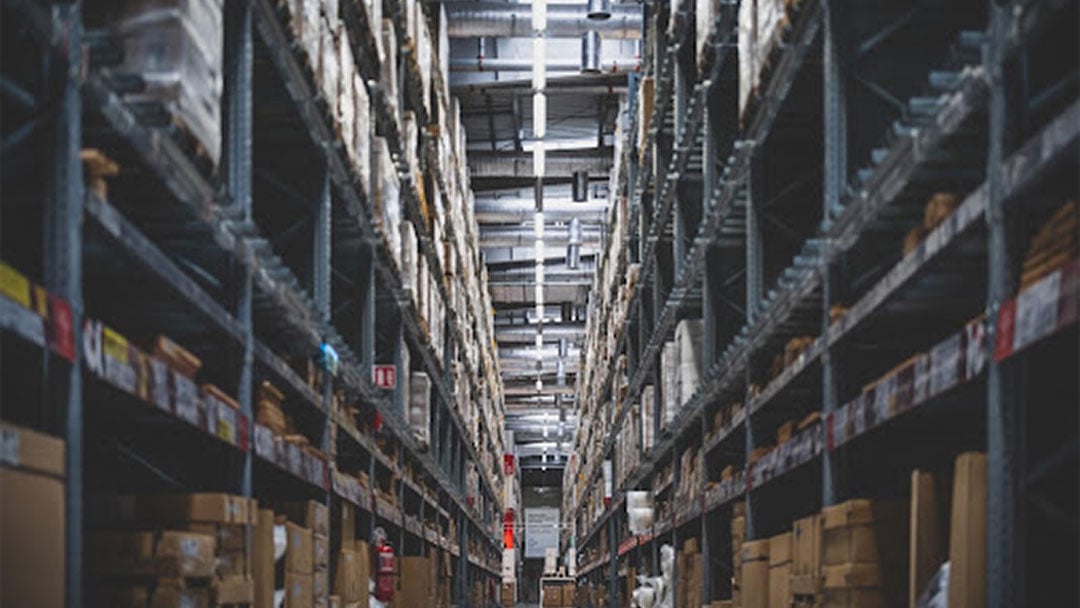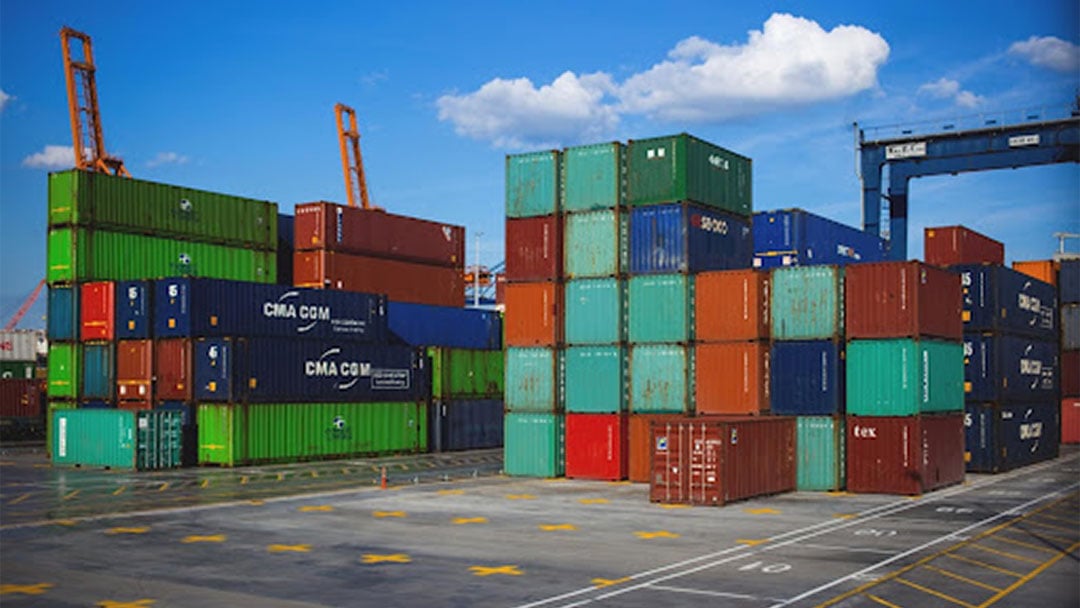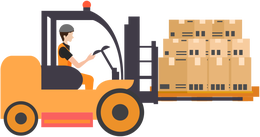As brick-and-mortar retail operations give way to the eCommerce landscape, warehouse fulfillment centers become the lifeblood of any successful business. Organizations can optimize their order fulfillment operations while cutting logistics costs simultaneously by using tech-enabled warehouse processes that minimize human error and maximize distribution efficiency. Let's look at what's involved in warehouse services and product fulfillment.
Related: Contract Packaging: What to Know About the Industry at the End of 2021

6 Stages to Warehouse Fulfillment Processing
Warehouse processes are streamlined to take advantage of bulk distribution services while maximizing profit margins for product sellers. The ease of online ordering creates constantly flowing goods and products shipping and processing in and out of the warehouse. Understanding the stages of the fulfillment process is key to recognizing supply chain management issues and raising efficiency. Here are the main steps to warehouse fulfillment processing:
Receiving
The receiving process involves warehouse teams accepting inventory from suppliers. Workers unload trucks and pallets then verify the correct items have been delivered. Warehouse employees also check that agreed quality standards for the products have been met. If discrepancies arise, the receiving warehouse generates a report detailing the missing, damaged, or otherwise inaccurate product concerns.
Putaway
Once the warehouse receives the products, the next step in warehouse fulfillment is moving the goods from the loading and receiving space to the appropriate warehouse storage locations. Putaway teams place the products in easily accessible areas, ensuring optimized convenience and speed in locating and obtaining said products when they need to be procured during the picking process. The putaway stage must also store the products where they will be safe from damage or spoilage.
Picking
When customers order items, the warehouse fulfillment team must then locate and collect the products necessary to complete said orders so they can be packed for shipping. Order picking is time-consuming and can be the most expensive stage of the fulfillment process. Picking often consumes over half of a company's total operating expenses. Therefore, to reduce costs and optimize the picking process, consider the following:
- Employ a fulfillment team that's experienced and skilled at locating packages then transporting them quickly and carefully.
- Use barcode scanners or RFID technology to improve accuracy.
- Optimize the warehouse layout and organize inventory so the picking team can easily move throughout the facility and quickly locate products.
- Use machinery such as forklifts and cranes, or robots, to transport items securely and quickly.
Packing
Once the items have been picked, they get brought to packing stations, where the fulfillment team prepares the order for shipping. Shipping damages account for $1 Billion in lost revenue annually in the United States due to costly returns, shipping fees, and refunds. Therefore, it is essential to handle each item with care during the packing stage, ensuring the correct packing and padding gets chosen to maintain product integrity. Once order items have been carefully packaged, the package is labeled with a sales order or invoice then readied for dispatch.
Dispatching
After the relevant items have been picked and packaged, it's time to ship the order. During this stage, the fulfillment team verifies the ordered items have been matched to the correct shipping address. This is vital to preventing re-shipping or return fees. Dispatch also requires the fulfillment team to arrange for shipping that meets the time parameters for scheduled arrival or pick-up of the order.
Returns
Retailers strive to avoid returns because they can directly affect revenue streams. That's why it's so important to get all of the preceding steps correct. Still, eCommerce return rates stand at about 30% of all products ordered, so even in the best of times with the most efficient operation, this stage is unavoidable. Returns require reverse logistics, and the process can be quite costly.
Depending on a company's return policy, previously shipped items may have to be picked up, and a replacement order may have to be shipped. While the returns process results in the certainty of eating costs, companies can execute best practices for pick and pack warehouse operations so fulfillment processes are optimized and the need for returns reduced as much as possible.
Related: What it Means to be a Food Grade Warehouse

How to Optimize Warehouse Processes
Warehouse and fulfillment costs make up a significant portion of any company's expenses while directly impacting the customer experience. Incorrect orders, damaged products, and slower shipping can be detrimental to customer satisfaction and loyalty. Here are steps to take to improve packaging practices and optimize warehouse processing.
Looking for someone to manage your warehouse inventory? Visit Dynamic 3PL today and learn what they can do to help!
Hire experienced managers
Warehouse managers should be experienced professionals who can streamline internal warehouse operations while optimizing their team's workflow. Look for managers with superior organizational skills who are capable of maximizing the efficiency of the warehouse's layout and storage system. Successful managers should also be knowledgeable enough to implement automation and innovation to optimize processes. And, they should be skilled at data analysis to track and scale inventory and fulfillment operations.
Check-in with workers
Employees on the ground at a warehouse know the processes that work and slow them down. Often, laborers can articulate problem areas a manager or supervisor may not recognize, so it's vital to maintain constant communication with every level of the fulfillment team. Talk to workers regularly, ask for suggestions on improving operations, and make sure they feel comfortable expressing their opinion, even if it differs from the one their boss may hold.
Implement software solutions
Logistics programs and smart warehousing technologies are great for optimizing productivity while minimizing human error. Warehouse Management Systems (WMS software) can streamline supply chain operations by providing real-time inventory data while creating insights and analytics regarding automation and productivity optimization. This can prevent inventory shortages and generate forecasts for product demand while allowing workers to more easily verify items and orders to minimize errors in the pick and pack process.
Regularly audit warehouse
Auditing warehouses helps identify problem areas and validates the success of efficient practices. When one warehouse has a lower return or wrong order rates, you can identify the factors contributing to optimal performance and implement those practices across the fulfillment network. Regular audits - quarterly or semi-annually - can also prevent stagnation among business employees and operations.
Supply chain reviews
Be sure not to put all of your eggs in one basket when it comes to audits and reviews. Not every problem in the fulfillment process originates in the warehouse. Supply chain problems can arise earlier and result in fulfillment delays if the supplier is behind on warehouse delivery. Regularly reviewing the supply chain from creation to warehouse delivery to customer receipt can help you maintain optimal efficiency.
Work with a 3PL
New and emerging companies often lack the resources to retain the services of fulfillment experts who can optimize warehouse operations. Direct-to-Consumer brands can partner with Third-Party Logistics (3PL) providers to help them affordably scale fulfillment operations. Top tiered 3PLs operate with complete transparency, providing businesses with direct insight into warehouse optimization, inventory management, and shipping. Finding a reputable 3PL partner can reduce errors, damages, and the need for returns, all while cutting down on fulfillment costs. Advantages of working with a 3PL include but are not limited to:
- Optimization of the Logistics Network
- Access to Distributed Warehouses
- Increased Efficiency for the use of Warehouse Space
- Reduced Labor Costs and Time Savings
- Improved Data and Analytics
Related: 3 Tips to Maintain a Successful 3PL Partnership
Want to learn more about what a Third-Party Logistics company can do? Visit Dynamic 3PL today and discover how they can best support your brand!

Efficiency, Speed, and Accuracy are Key
Optimized warehouse processes are vital to the success of your company or brand. A well-functioning fulfillment operation directly contributes to customer satisfaction, and experienced logistics managers or leading 3PLs can ensure your warehouse services meet demand as your business grows, allowing you to focus on what matters most: the brand itself.



